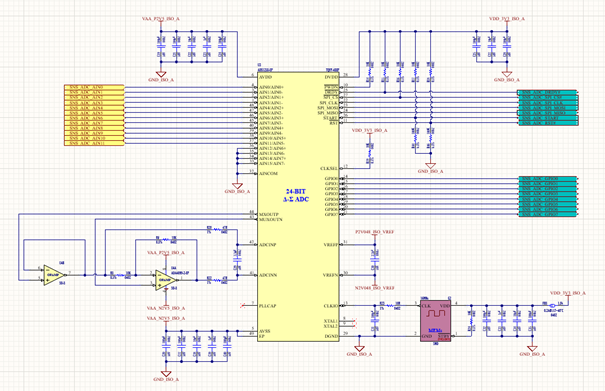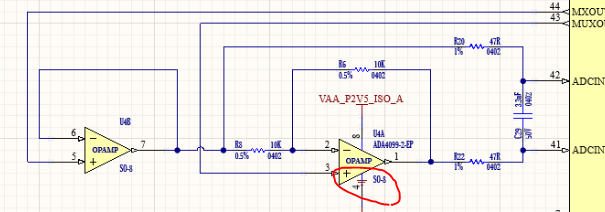Other Parts Discussed in Thread: ADS1258
Hello Sir,
We use ADS1258 as single ended mode, all GPIO as output. Start and reset has 2 option. We use pulled up. Schematic is attached. Register configurstion is as follows.
CONFIG0_DEFAULT = 0x0A; // | CONFIG0_BYPAS_MASK;
CONFIG1_DEFAULT = 0xF0;
MUXSCH_DEFAULT = 0x00;
MUXDIF_DEFAULT = 0x00;
MUXSG0_DEFAULT = 0x08;
MUXSG1_DEFAULT = 0x00;
SYSRED_DEFAULT = 0x00;
GPIOC_DEFAULT = 0x00;
GPIOD_DEFAULT = 0x00;

I can measure AIN3 with above configuration. Also I can see CONFIG0_BYPAS effect as I expect. But I measure some offset voltages.
Muxoutn is always 267mV. It does not matter whether CONFIG0_BYPAS register is set or not.
AIN3 measurement is 244,65mV if 253mV is applied. -251,90mV measured if -253mV is applied.
AIN12 is 8,79mV by adjusting MUXSGx registers.
AIN13 is 10,39mV by adjusting MUXSGx registers.
AIN14 is 12,02mV by adjusting MUXSGx registers.
AIN15 is 12,57mV by adjusting MUXSGx registers.
We also detach U4, R20 and R22. But problem continues.
Could you explain why I could not see AINCOM voltage at MUXOUTN?
We supply DVDD with 3.3V. When the start pin low, I can measure 3.3V via multimeter. But when the start pin high, this voltage goes to 3.5V. Then I detach the start pin pull up to measure adc digital pinout. When the start pin low, adc start pin goes 4mV. But when the start pin high, this voltage goes to 4.44V.
Thanks in advance.
Murat




